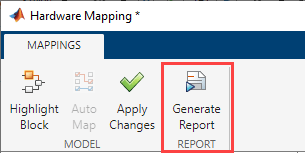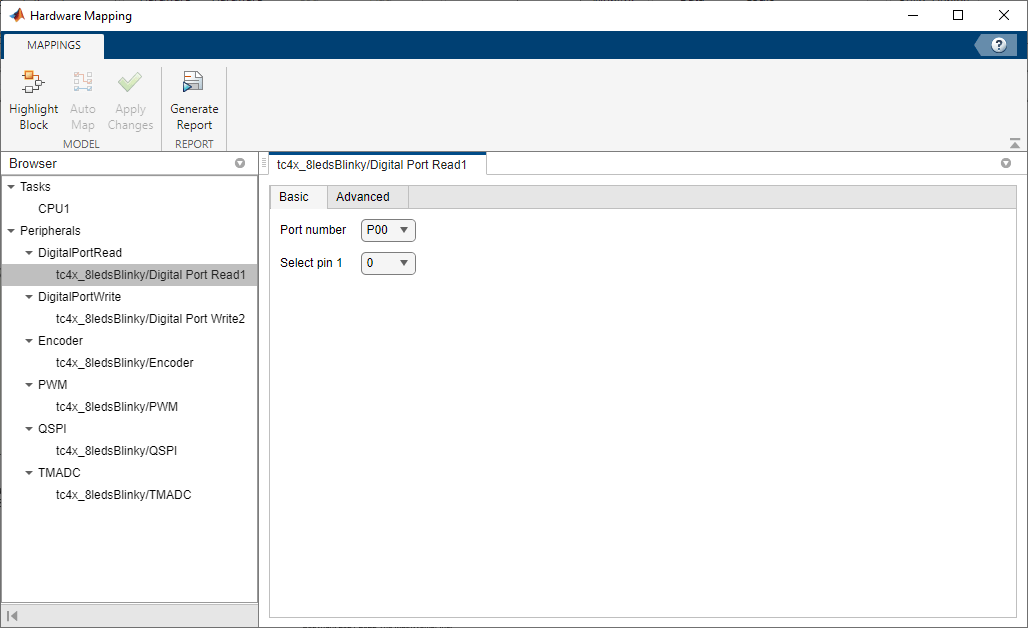Hardware Mapping
Map tasks and peripherals in a model to hardware board configurations
Since R2022b
Description
The Hardware Mapping tool allows you to configure the software tasks and peripherals on the selected hardware board.
In this tool, you can map the tasks in your software model to the available event sources and interrupts:
Manually select the task in Browser > Tasks >
CPU name. Select the desired event or interrupt. source. Click the Apply Changes button in the toolstrip.
The sources of events or interrupts depend on the choice of hardware board and peripherals available in the model.
You can configure the global parameters. To set the group peripheral, select peripheral in Browser > Peripherals >
Peripheral group name. In thePeripheral group namepane, choose the appropriate settings to apply to the hardware peripheral when deployed to the hardware board. The available parameters depend on the selected hardware board for the model and the peripheral.In this tool, you can configure the peripheral by setting hardware specific parameters. To set the peripheral, select the peripheral in Browser > Peripherals >
Peripheral group name>Peripheral block name. In thePeripheral block namepane, choose the appropriate settings to apply to the hardware peripheral when deployed to the hardware board. The available parameters depend on the selected hardware board for the model and the peripheral.
After configuring all the parameters for peripherals in Hardware Mapping, click Apply Changes. Click Generate Report to view the hardware mapping summary report. The hardware mapping summary report with all the peripheral configurations are generated in a web page and saved in the following location:
file:///C:/Users/<username>/AppData/Local/Temp/html/SummaryReport

For a complete set of parameters for available hardware boards, see:
Open the Hardware Mapping
In the Hardware tab, click Hardware Mapping.

Version History
Introduced in R2022b
See Also
Map Tasks and Peripherals Using Hardware Mapping | Digital Port Write Peripheral Configuration | Encoder Peripheral Configuration | Digital Port Read Peripheral Configuration | PWM Peripheral Configuration | QSPI Peripheral Configuration | TMADC Peripheral Configuration | SENT Peripheral Configuration | DSADC Peripheral Configuration | FCC Peripheral Configuration | Resolver Peripheral Configuration | CDSP Peripheral Configuration | MCAN Transmit Peripheral Configuration | MCAN Receive Peripheral Configuration
